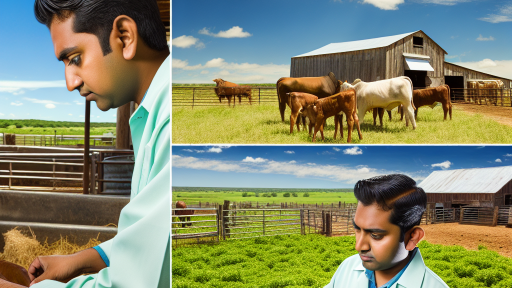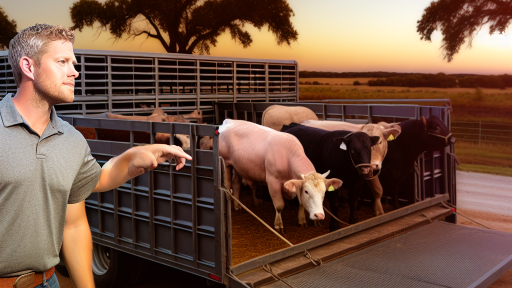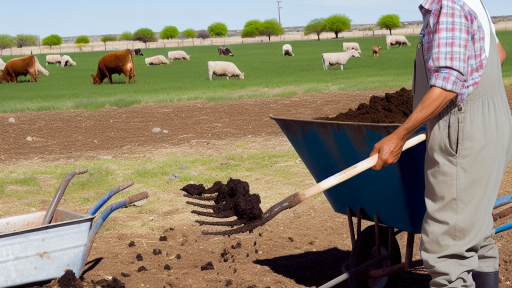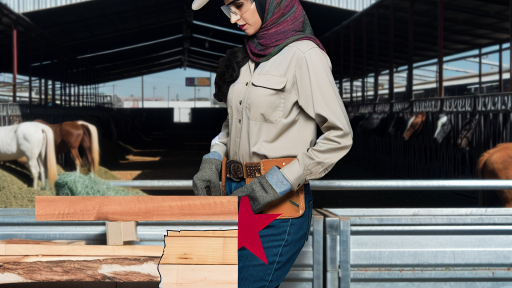Understanding the Regulations and Standards for Livestock Transport
Overview of Livestock Transport Regulations
Livestock transport regulations ensure animal welfare during transit.
These regulations vary by country and region.
Understanding them is crucial for compliance.
Authorities enforce regulations to protect both animals and public safety.
Key Components of Livestock Transport Standards
Standards cover aspects such as vehicle design, loading practices, and journey length.
Vehicles must provide adequate ventilation and space for animals.
Loading practices should minimize stress on the animals.
Journey length regulations often dictate rest periods and feeding times.
Animal Welfare Considerations
Animal welfare is a primary concern in livestock transport.
Transporters must prioritize the health and comfort of the animals.
Regular training helps staff understand these welfare needs.
Additionally, compliance with welfare standards enhances overall operations.
Licensing and Certification Requirements
Transport companies must obtain necessary licenses and certifications.
These credentials vary based on the type of livestock being transported.
Verification processes ensure that companies are equipped to handle animal transport.
Transform Your Agribusiness
Unlock your farm's potential with expert advice tailored to your needs. Get actionable steps that drive real results.
Get StartedNon-compliance can result in fines and loss of operating rights.
Local and International Regulations
International regulations often influence local practices.
For instance, the World Organisation for Animal Health outlines key standards.
Transporters must stay updated on changes in both local and international regulations.
Regular audits help maintain compliance and improve standards.
Record Keeping and Documentation
Proper documentation is vital for all livestock transports.
Records should include journey details, animal health checks, and transport conditions.
This documentation aids in compliance and traceability.
Moreover, it serves as proof during inspections and audits.
Choosing the Right Transport Vehicle
Specifications to Consider
The specifications of a transport vehicle directly impact livestock welfare.
First, consider the vehicle’s size and capacity.
It should accommodate the number of animals being transported.
Additionally, ensure that the vehicle has proper ventilation.
Good ventilation keeps livestock comfortable during transit.
Moreover, the flooring should be non-slip and easy to clean.
This prevents injuries and allows for quick sanitation.
Another important feature is the presence of loading ramps.
Ramps should be designed for easy and safe entry and exit.
Types of Transport Vehicles
Several types of vehicles can be used for livestock transport.
Trailers are commonly used, especially for short distances.
They are versatile and can be attached to various trucks.
For long distances, consider specialized livestock semis.
These vehicles often have climate control systems for comfort.
Finally, modular transport units can be beneficial as well.
Showcase Your Farming Business
Publish your professional farming services profile on our blog for a one-time fee of $200 and reach a dedicated audience of farmers and agribusiness owners.
Publish Your ProfileThey allow for flexible configurations based on needs.
Features Enhancing Animal Welfare
Animal welfare should be the top priority when choosing vehicles.
Look for features that reduce stress during transport.
Soft sides and padded walls can decrease anxiety levels.
Moreover, a temperature control system is vital.
This ensures that livestock remain in a comfortable environment.
Additionally, provide adequate space for each animal.
Crowding can lead to injury and stress, which should be avoided.
Lastly, consider vehicles with viewing slots for monitoring.
These slots allow for easy inspection of animals during travel.
Compliance with Regulations
Ensure that all vehicles meet industry standards and regulations.
Check local laws regarding animal transportation requirements.
Compliance fosters safe and ethical livestock handling.
Additionally, keep updated with changes in legislation.
Staying informed helps in avoiding legal issues.
Partner with organizations that provide guidance on compliance.
These organizations can help educate on best practices.
Planning the Route: Factors to Consider for Efficiency and Safety
Assessing Transportation Infrastructure
Evaluate the quality of roads along the route.
Consider the accessibility of loading and unloading points.
Identify potential traffic bottlenecks that may cause delays.
Additionally, research local regulations related to livestock transport.
Weather and Environmental Conditions
Check weather forecasts prior to transport.
Prepare for extreme temperatures that may impact animal welfare.
Plan for possible weather-related obstacles like snow or flooding.
Ensure that vehicles are equipped for varying environmental conditions.
Time Management and Scheduling
Establish a clear timetable for each leg of the journey.
Allocate sufficient rest stops for the animals’ well-being.
Plan your route to minimize transport time without sacrificing safety.
Include contingency time for unforeseen delays.
Animal Welfare Considerations
Ensure that transport vehicles provide adequate ventilation.
Monitor the animals’ behavior and stress levels during transit.
Use appropriate handling techniques to reduce anxiety.
Lastly, adhere to animal welfare regulations throughout the process.
Fuel and Resource Management
Calculate the fuel requirements for the journey.
Identify fuel stations along the route to prevent shortages.
Prepare necessary supplies, including water and feed, for the animals.
Keep a checklist of essential items for smooth transport.
Discover More: Maintaining Cleanliness In Livestock Housing
Loading and Unloading Techniques for Large-Scale Operations
Importance of Proper Techniques
Effective loading and unloading techniques greatly affect livestock welfare.
They also influence the efficiency of transport operations.
Showcase Your Farming Business
Publish your professional farming services profile on our blog for a one-time fee of $200 and reach a dedicated audience of farmers and agribusiness owners.
Publish Your ProfileImproper methods can lead to stress and injury.
Therefore, prioritizing animal safety is crucial.
Planning the Process
A well-thought-out plan streamlines loading and unloading.
Start by assessing the transport vehicle’s size and type.
Next, ensure adequate facilities and equipment are in place.
Consider the number of animals to be loaded at once.
Additionally, gauge the time of day and weather conditions.
Loading Techniques
Utilize low-stress handling practices during loading.
Employ trained personnel to guide animals calmly.
Use appropriate equipment, like loading chutes and ramps.
Ensure ramps are non-slip and adequately lit.
Gradually introduce animals to the loading area.
Using Space Effectively
Maximize space within the transport vehicle.
Keep animals in familiar groups to minimize anxiety.
Ensure there is enough room for all animals to stand comfortably.
Avoid overcrowding, as it can lead to distress.
Unloading Techniques
Unloading should be swift yet controlled.
Communicate clear signals between team members during unloading.
Guide animals calmly to prevent panic.
Utilize anti-slip surfaces in the unloading area.
Monitor the condition of each animal after unloading.
Post-Unloading Evaluation
Assess each animal for stress or injury post-transport.
Provide appropriate care for any distressed livestock.
This ensures their well-being before they reach their final destination.
Documentation of any issues can inform future transport logistics.
Training and Guidelines
Regular training programs ensure all staff are skilled in best practices.
Provide guidelines on handling different types of livestock.
Emphasize the importance of patience and low-stress methods.
Additionally, maintain clear communication protocols within teams.
Incorporate feedback from on-the-ground experiences to improve processes.
Technological Innovations
Leverage technology to aid in the loading and unloading process.
Use monitoring systems to track animal movement and health.
Implement automated systems for streamlined operations.
Utilize mobile applications for seamless communication among team members.
Such innovations can enhance overall efficiency in livestock transport.
Delve into the Subject: Sustainable Practices in Livestock Handling and Transport
Animal Welfare During Transport: Best Practices and Compliance
Importance of Animal Welfare
Ensuring animal welfare during transport is crucial for ethical livestock management.
Animals experience stress, which can impact their health and productivity.
Companies must prioritize humane treatment to comply with regulations.
Proper transport methods can enhance animal comfort and welfare.
Showcase Your Farming Business
Publish your professional farming services profile on our blog for a one-time fee of $200 and reach a dedicated audience of farmers and agribusiness owners.
Publish Your ProfilePreparation for Transport
Effective planning is essential for successful livestock transport.
Start with assessing the animals’ health before transport.
Work with veterinarians to identify any special needs.
Incorporate acclimation processes to help animals adjust to transport conditions.
Transport Vehicle Standards
Select appropriate vehicles designed for animal transport.
Ensure vehicles like trailers have proper ventilation.
Maintain a comfortable temperature during transit.
Install anti-slip flooring to prevent injuries.
Loading and Unloading Protocols
Implement efficient loading and unloading techniques to minimize stress.
Train staff on proper handling procedures for all animals.
Use low-stress loading practices to comfort the animals.
Avoid overcrowding to allow each animal enough space.
Monitoring Animal Condition
Regularly check the welfare of animals during transit.
Establish protocols to observe behavior and health signs.
Respond promptly to any immediate welfare concerns.
Document observations to ensure compliance with regulations.
Legal Requirements and Compliance
Familiarize yourself with local and national transport regulations.
Stay updated on laws regarding livestock welfare standards.
Ensure all staff are trained on compliance issues.
Maintain thorough records for auditing and regulatory review.
Post-Transport Considerations
Assess animal welfare upon arrival at the destination.
Provide immediate veterinary care for any distressed animals.
Establish a recovery area to allow animals to rest after transport.
Monitor nutritional needs to facilitate recovery.
Discover More: Livestock Breeding Best Practices for Farmers
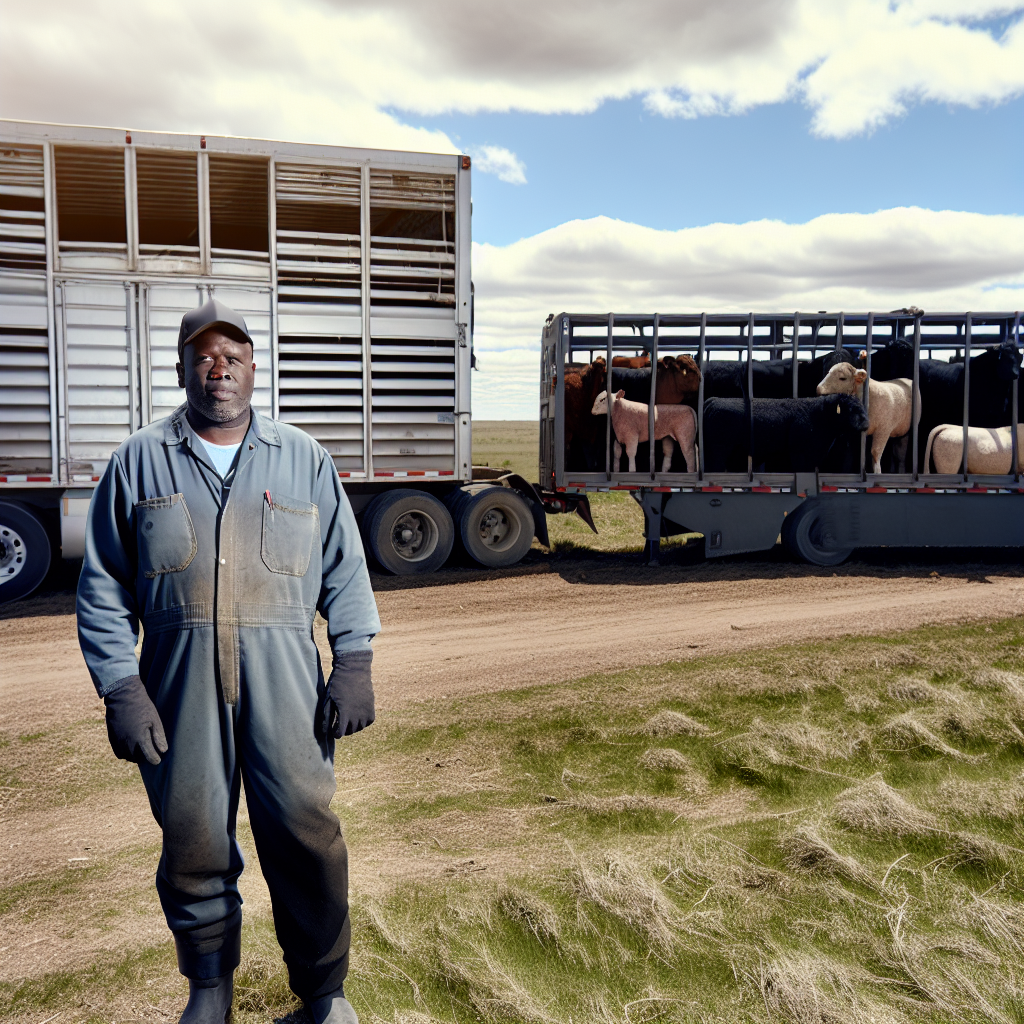
Monitoring Livestock Health During Transit
Importance of Health Monitoring
Monitoring livestock health during transit is critical for their well-being.
Healthy animals can better withstand stress during transport.
Additionally, it ensures compliance with regulations and industry standards.
Common Health Issues During Transit
Transportation can lead to various health issues in livestock.
Stress-related conditions are often common in animals under transport.
Dehydration and hypothermia may also occur without proper monitoring.
Identifying these risks early helps in managing animal health effectively.
Tools for Health Monitoring
Several tools exist for monitoring livestock health during transit.
Electronic monitoring devices provide real-time data about animal condition.
Wearable sensors can track vital signs such as heart rate and temperature.
Mobile applications can assist in tracking health metrics efficiently.
Techniques for Effective Monitoring
Utilizing multiple techniques enhances the monitoring process.
Regular observations by trained staff play a key role in health assessment.
Maintaining logs of animal behavior helps identify potential issues.
Using video surveillance allows for monitoring without disruption.
Showcase Your Farming Business
Publish your professional farming services profile on our blog for a one-time fee of $200 and reach a dedicated audience of farmers and agribusiness owners.
Publish Your ProfileBest Practices for Livestock Transport
Implementing best practices is essential for successful livestock transport.
Prior to departure, ensure animals are healthy and fit for travel.
During transit, provide adequate ventilation and access to water.
Monitor temperature and adjust conditions based on animal needs.
Post-Transport Health Assessment
Health assessment does not end upon arrival at the destination.
Conducting a thorough check allows for early detection of health issues.
Documentation of health status aids in future transport planning.
Establishing a routine post-transport check enhances overall animal welfare.
Discover More: Regulatory Compliance and Standards in Aquaculture
Training Personnel: Ensuring Proper Handling and Safety Procedures
Importance of Training in Livestock Transport
Training personnel is essential for effective livestock transport.
Properly trained staff can minimize stress on animals during transportation.
Additionally, training enhances safety for both employees and livestock.
Ultimately, well-trained individuals contribute to successful operations.
Developing a Comprehensive Training Program
Start by assessing the current level of employee knowledge.
Next, create specific training objectives based on this assessment.
Incorporate hands-on training to build practical skills.
Utilize simulations to prepare personnel for real-life scenarios.
Ensure training covers animal behavior and handling techniques.
Key Topics for Training Sessions
- Understanding animal welfare standards
- Emergency procedures during transport
- Proper techniques for loading and unloading
- Recognizing signs of stress or illness in animals
- Maintaining appropriate transport conditions
Evaluating Training Effectiveness
Regularly assess training outcomes through evaluations and feedback.
Encourage staff to share experiences and suggest improvements.
Use these insights to refine the training program continuously.
Tracking performance metrics helps identify areas for future training.
Continuous Training and Development
Consider ongoing training to keep staff updated on best practices.
Introduce workshops that focus on emerging trends in livestock transport.
Promote a culture of continuous learning and improvement.
Ultimately, this investment enhances overall efficiency and safety.
Using Technology to Enhance Transport Efficiency
Benefits of GPS and Tracking Systems
GPS technology revolutionizes livestock transport logistics.
It provides real-time location tracking of vehicles.
Moreover, it enhances route management and fuel efficiency.
This system allows for timely deliveries, improving overall operations.
Implementing Tracking Systems
Tracking systems integrate smoothly into existing fleet operations.
These systems enable continuous monitoring of livestock conditions.
Furthermore, they facilitate communication between drivers and managers.
Choosing the Right Technology
Selecting appropriate GPS solutions requires careful consideration.
Potential buyers should assess features relevant to livestock transport.
Factors to consider include durability and user-friendliness.
Price also plays a crucial role in decision-making.
Enhancing Animal Welfare
Technology adoption significantly benefits animal welfare during transport.
With real-time data, conditions can be adjusted immediately.
This ensures animals are comfortable and safe throughout their journey.
Showcase Your Farming Business
Publish your professional farming services profile on our blog for a one-time fee of $200 and reach a dedicated audience of farmers and agribusiness owners.
Publish Your ProfileCase Studies of Successful Implementation
Many companies have successfully integrated GPS systems.
One example is Green Valley Farm, which optimized routes significantly.
As a result, they reduced transport costs while improving delivery times.
This success demonstrates the potential of technology in livestock transport.
Additional Resources
Adaptation and development pathways for different types of farmers …
APHIS Foreign Animal Disease Framework Response Strategies …

